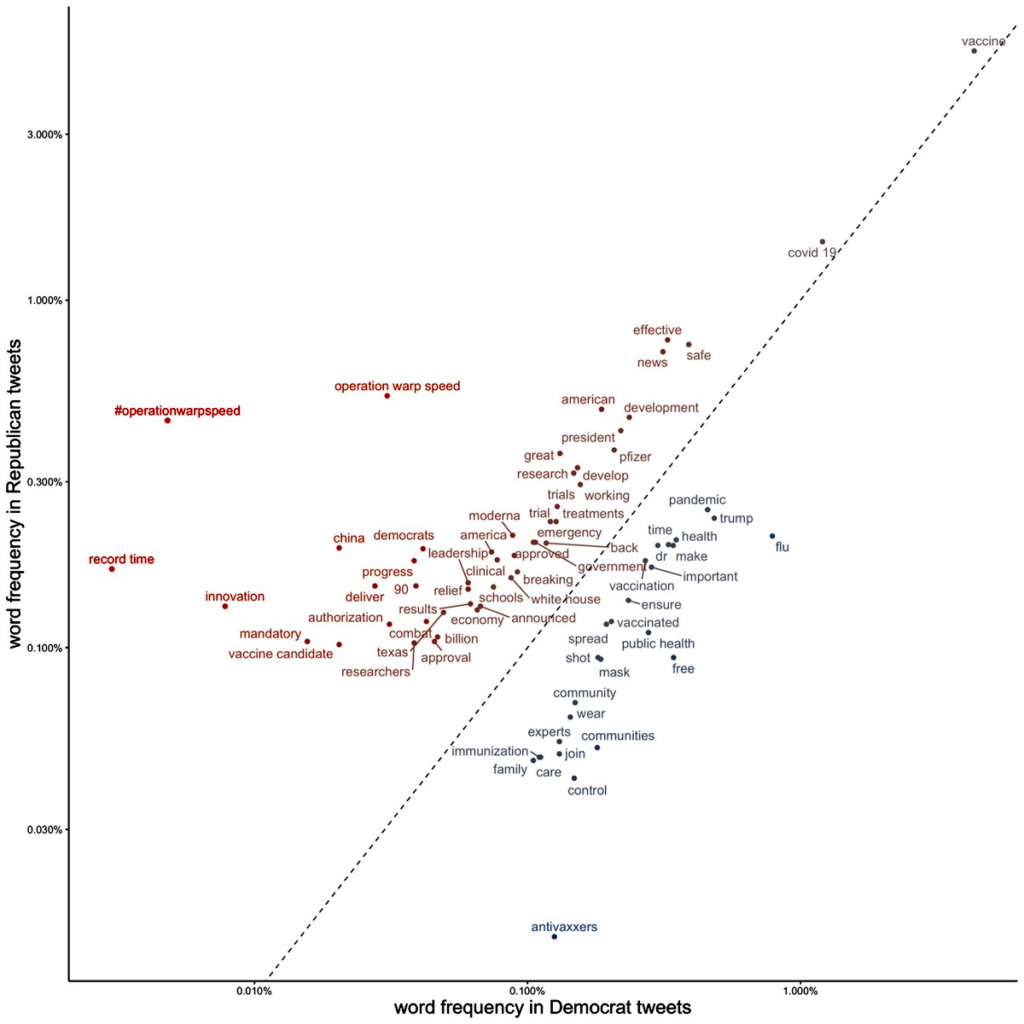
A New Mark Pauly Book About What Health Care Managers Don’t Know
The Wharton Professor Produces a Compendium of Economics Wisdom for Health Care Pros
Blog Post

Social media outlets such as Twitter enable people, politicians included, to share their knowledge and opinions on topics of concern, including COVID-19. Because the language that politicians use to communicate with their constituents about vaccination may play an important role in vaccine uptake during the pandemic, we were curious about the partisan differences in the language that state and federal legislators used to communicate about vaccination.
In our study, published recently in JMIR Infodemiology, we reported that Republicans were more likely to use words and topics (e.g., “record time,” “Operation Warp Speed success”) that discussed the successful development of the SARS-CoV-2 vaccine. Democrats, on the other hand, were engaged in a broader conversation that was more aligned with public health messaging about the vaccine, using words and terms such as “influenza,” “antivaxxers,” “vaccine prioritization,” and “free.” Republicans tweeted about fewer topics than Democrats, and the keywords associated with Republicans were more highly partisan than those associated with Democrats. Both of these findings are consistent with the presence of more focused, consistent vaccine-related communication from Republican than Democrat legislators. We also found that the political polarization of vaccine-related tweets increased over the study period.
The politically polarized discussion of vaccination on Twitter has the potential to further contribute to vaccine hesitancy. While Twitter content reflects conversations happening outside of digital spaces, it also shapes these conversations. Given the power of the platform, future research needs to directly measure the effect of politicians’ vaccine-related communication on vaccine uptake.
The study, Partisan Differences in Legislators’ Discussion of Vaccination on Twitter During the COVID-19 Era: Natural Language Processing Analysis, was published in JMIR Infodemiology on February 18, 2022. Authors include Eden Engel-Rebitzer, Daniel C. Stokes, Zachary F. Meisel, Jonathan Purtle, Rebecca Doyle, and Alison M. Buttenheim.




The Wharton Professor Produces a Compendium of Economics Wisdom for Health Care Pros

Announcing Bold New Goals While Crippling the Infrastructure Needed to Achieve Them

LDI Fellows Call for Real-Time De-Escalation Teams and Safer Staffing Ratios to Prevent Chaos Before it Erupts

Penn LDI Senior Fellow Yong Chen Is an MPI in the 10-Institution NIA Undertaking

Despite Streamlined Processes, FDA’s Role in Rare-Disease Drug Development Draws Continued Scrutiny

LDI Fellows Used Medicaid Data to Identify Individuals at Highest Risk for Cocaine- and Methamphetamine-Related Overdoses, Paving the Way for Targeted Prevention

More Focused and Comprehensive Large Language Model Chatbots Envisioned

Medicare Advantage Modestly Cut Black–White Disparities in Chronic Disease Prevention Compared to Traditional Medicare, but Care Gaps Remain for Latinx Populations